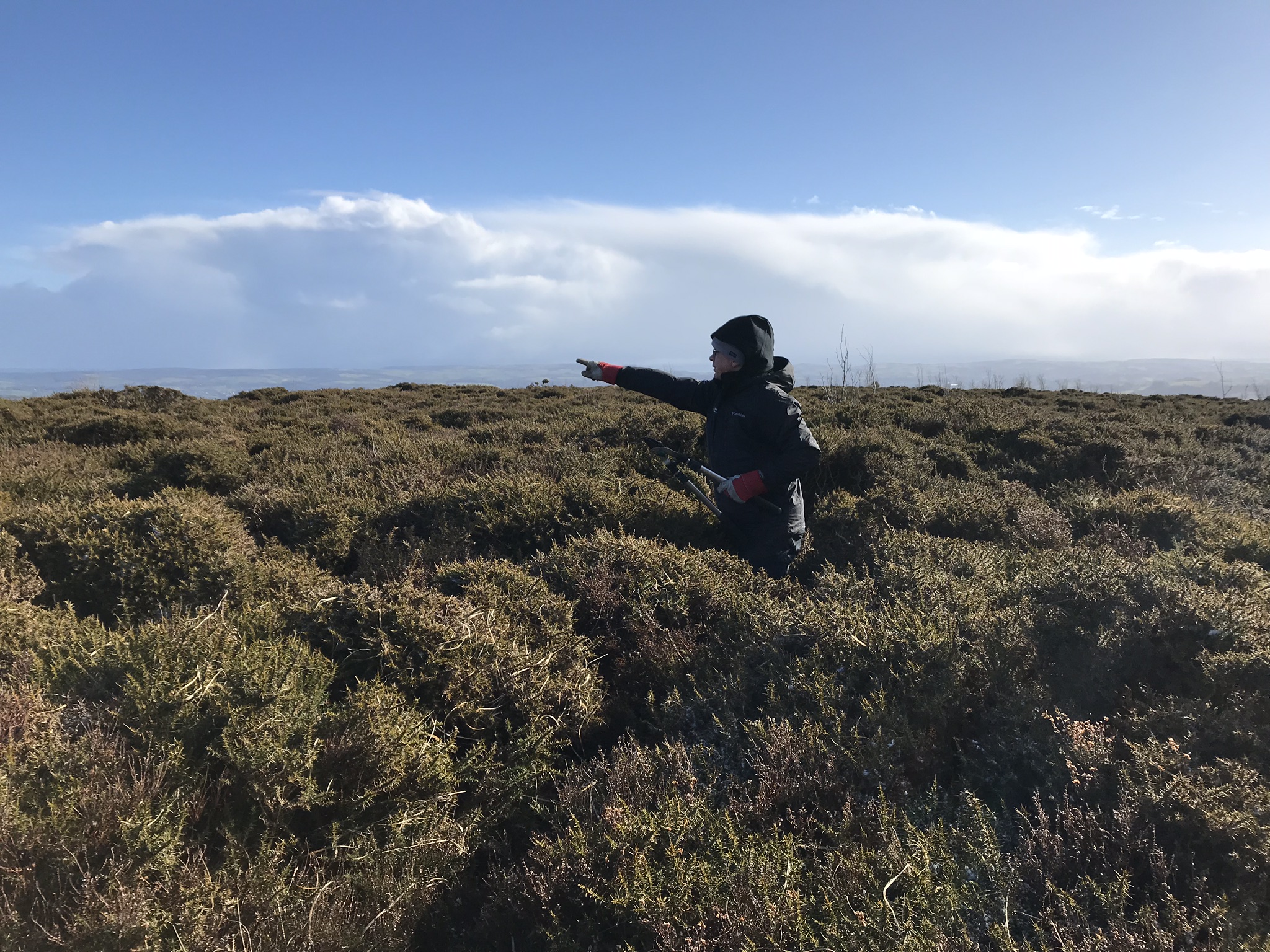Not all piles of stones are equal as we discovered yesterday…led by Dartmoor ranger, archaeologist Simon Lee, we worked with around 20 other volunteers to clear the gorse from a ring cairn just south east from Haytor. Simon explained that there is a series of four ring cairns in a line on the hillside. But over the last decade or so each has become hidden by a thick layer of gorse and some straggly heather plants.
Ring cairns date from around 2000 BC. They were on elevated ground to ensure they were prominent and visible. They are likely to have been used for burial rites, but their exact function is unknown. Indeed like the medieval churches we see today, it is likely that successive generations added to them and modified them for slightly different uses.
We left the car park in the sun at just after 10.30. By the time we had walked a few hundred metres onto the moor it was sleeting, but then the sun broke through again later in the morning.
Before we arrived the Dartmoor rangers had scoped the site and marked it out with ribbons on surrounding saplings. Armed with bow saws and loppers it’s amazing what 25 people can accomplish- by just after 2pm we had cleared the whole site – a circular mound and ditch approximately 30m in diameter. Now that the gorse has been subdued the Dartmoor ponies and other grazing animals will hopefully help keep the area clear for other visitors to see.
Dartmoor volunteers do this type of work every second Sunday of the month. This was our first time, but we met others who have been joining in most months for a year or more. It was a very welcoming group and we look forward to joining in with similar projects in future.

